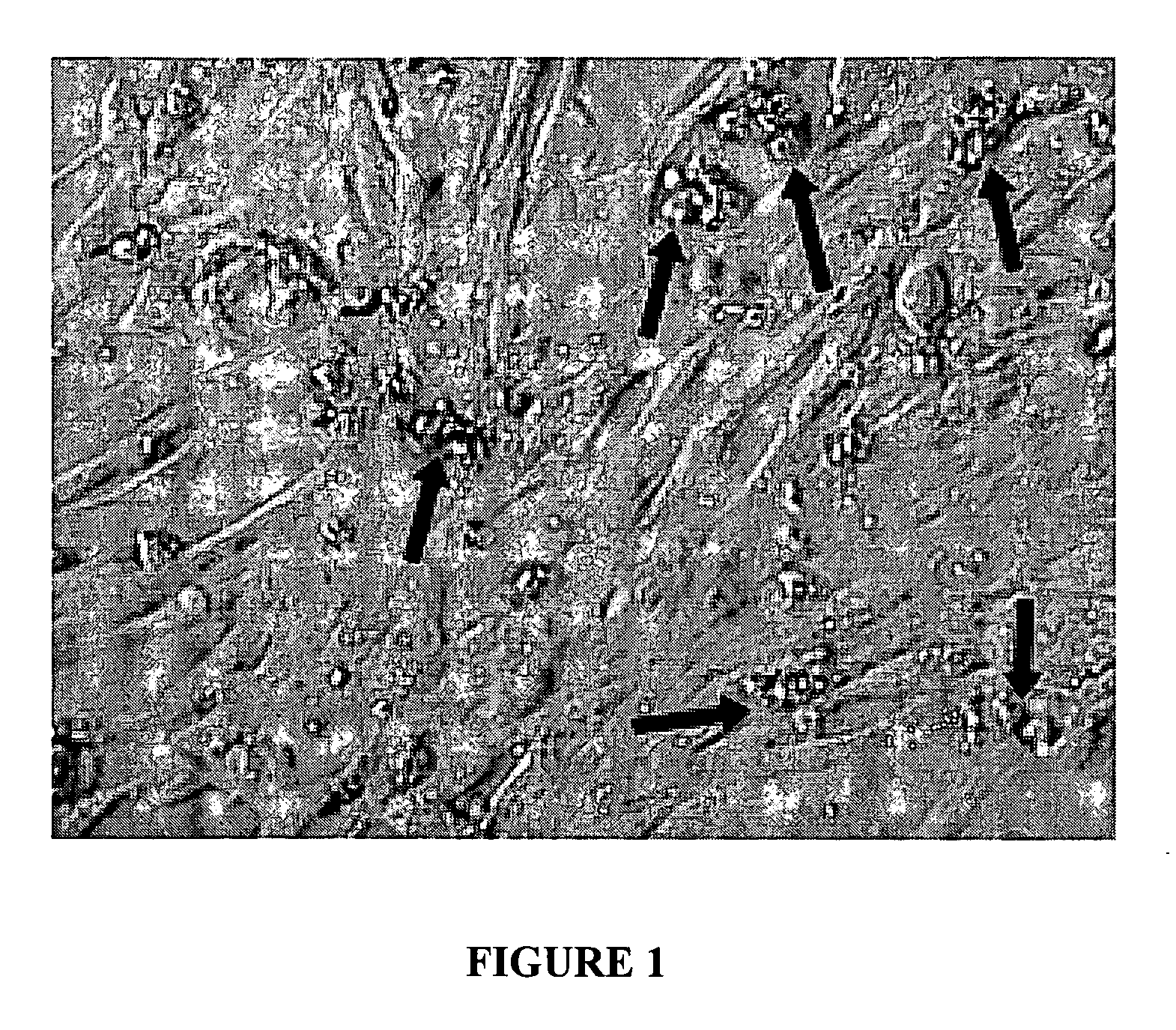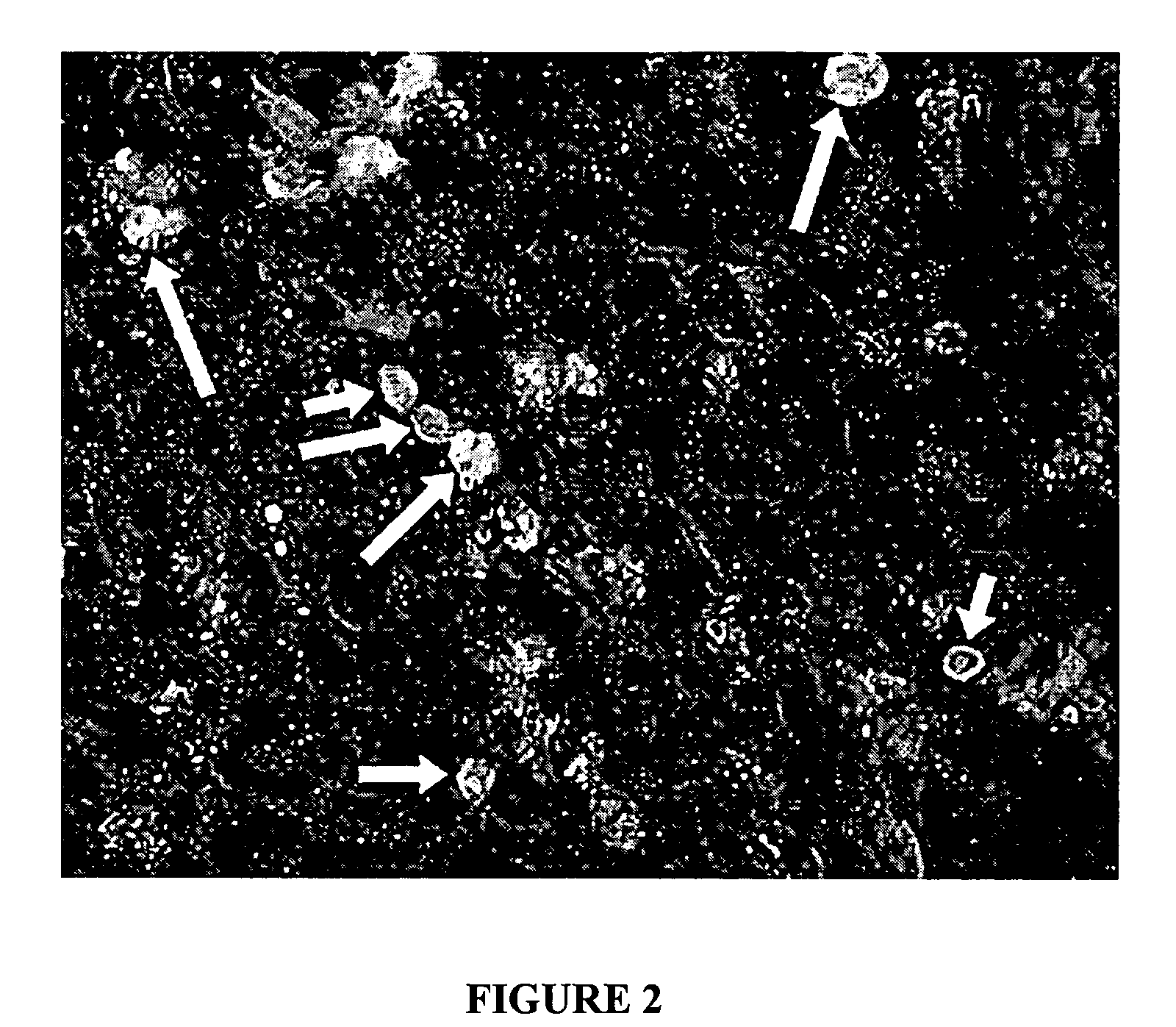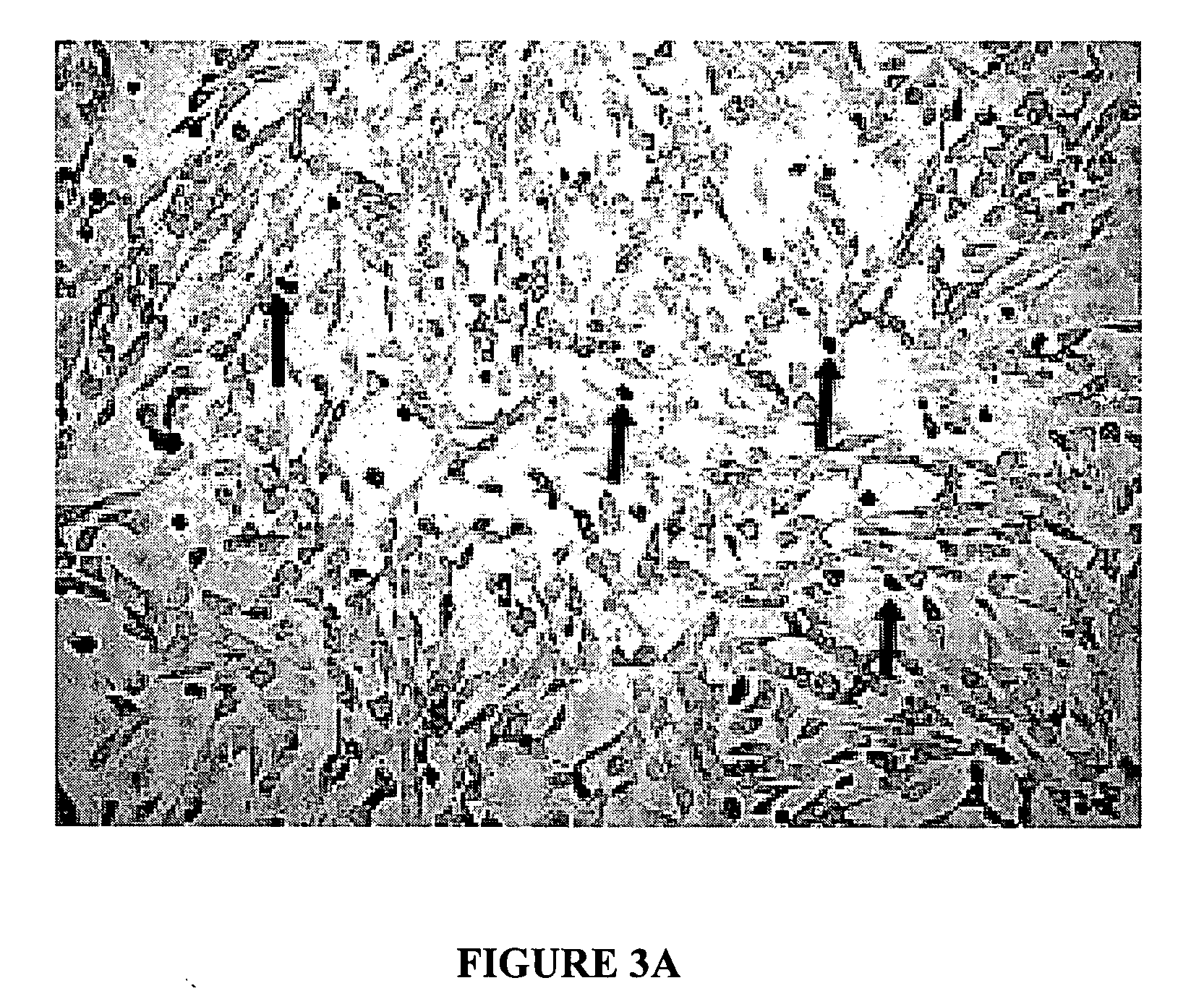Disimmortalizable mammalian chromaffin cell lines for cell therapy for pain
a chromaffin cell and chromaffin cell technology, applied in the field of neuropathic pain treatment, can solve the problems of limited clinical protocol at large-scale level, reduced catecholamine and opioid peptide synthesis, and many patients continue to suffer from intractable pain
- Summary
- Abstract
- Description
- Claims
- Application Information
AI Technical Summary
Benefits of technology
Problems solved by technology
Method used
Image
Examples
Embodiment Construction
Isolation of Human Fetal Adrenal Medulla Cells
[0045] Fetal adrenals from intact whole human embryos (gestational age 7-12 weeks after conception; embryo rump-crown measurements 25-70 mm) were dissected in Mg2+—Ca2+-free Hank's balanced salt solution (CMF-HBSS) with 1× Gentmicin (Biowhittaker) on ice, mechanically dispersed and then treated with 3 ug / ml Liberase Blendzyme 2 / 3 (Roche Molecular Biochemicals) at 37 C for 30 min, as described previously (Reference 5). These tissues were obtained from Paule de Viguier Hospital, Toulouse, France, from patients who were electively-aborted with voluntary interruption of pregnancy. These procedures and use of tissue followed a protocol reviewed and approved by the French National Ethics Committee (Reference 3). Dissected tissue was dissociated after trituration through increasingly finer-bore cotton-plugged glass pipettes, and the settled tissue was rinsed ×1 with horse serum (HS; Sigma), filtered (80 um, sterile) into growth media (to remo...
PUM
 Login to View More
Login to View More Abstract
Description
Claims
Application Information
 Login to View More
Login to View More - R&D
- Intellectual Property
- Life Sciences
- Materials
- Tech Scout
- Unparalleled Data Quality
- Higher Quality Content
- 60% Fewer Hallucinations
Browse by: Latest US Patents, China's latest patents, Technical Efficacy Thesaurus, Application Domain, Technology Topic, Popular Technical Reports.
© 2025 PatSnap. All rights reserved.Legal|Privacy policy|Modern Slavery Act Transparency Statement|Sitemap|About US| Contact US: help@patsnap.com



